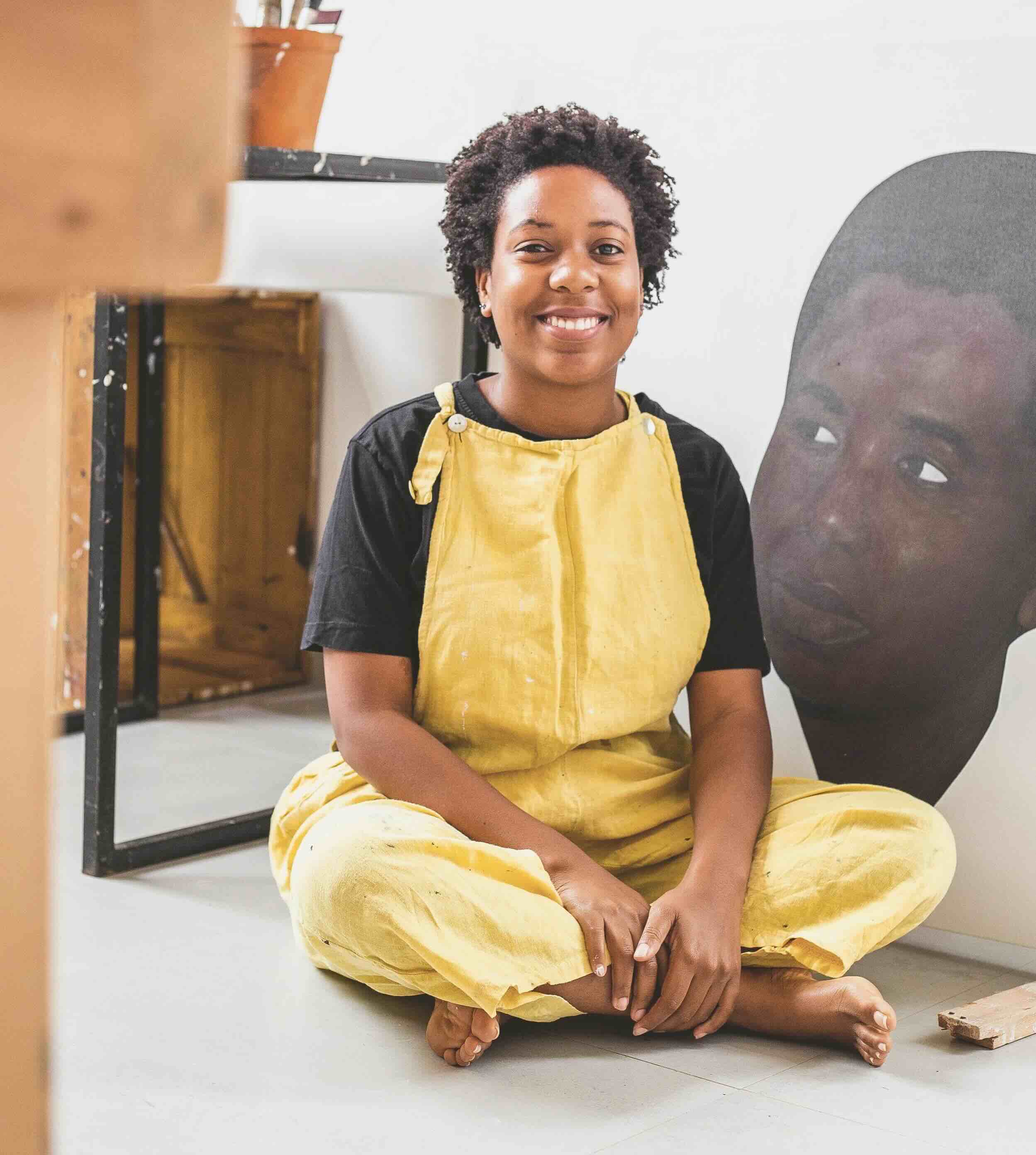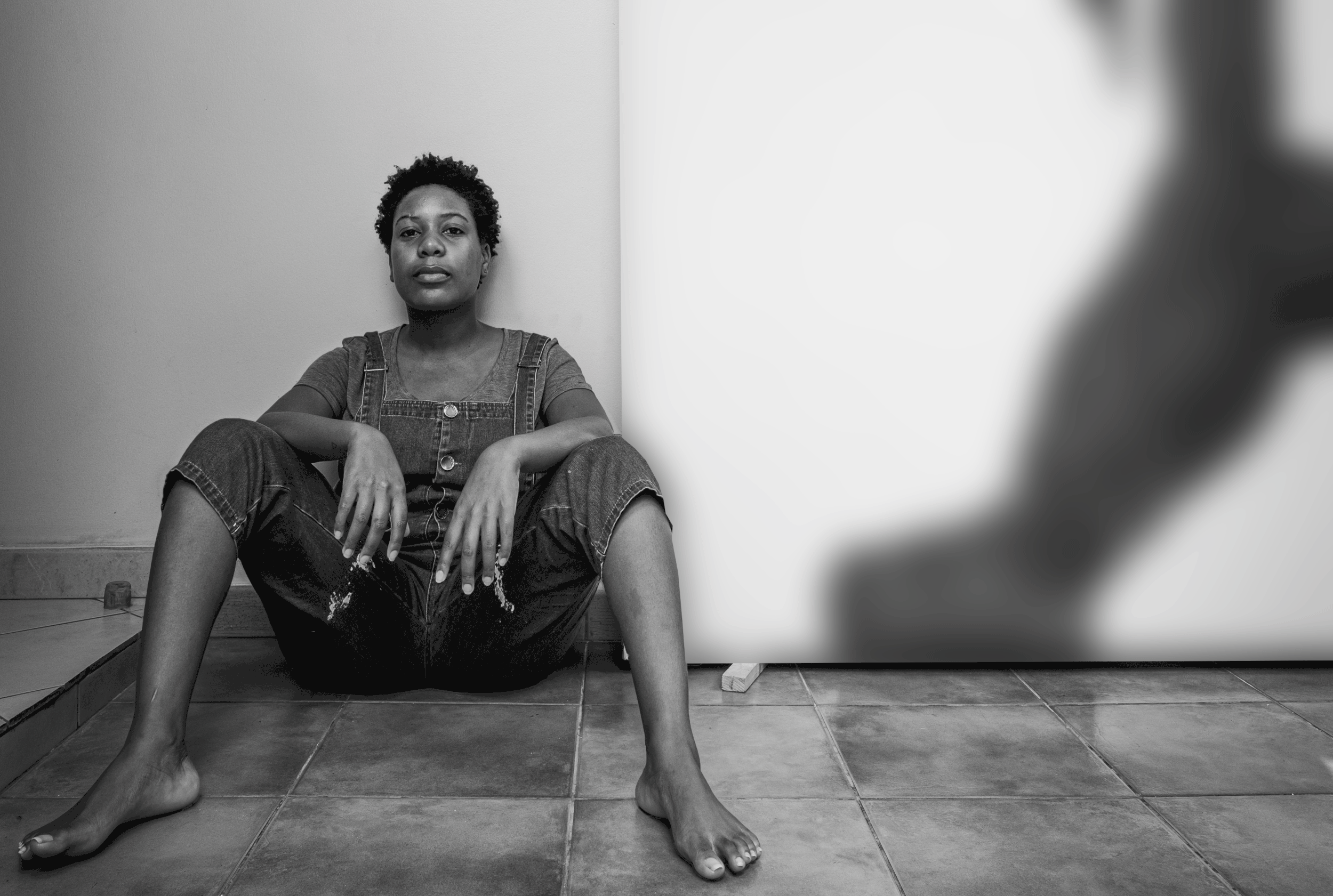
Tanzanian painter Sungi Mlengeya is redefining Black womanhood in contemporary art.
Tanzanian painter Sungi Mlengeya is redefining Black womanhood in contemporary art.
On a blank canvas, silence takes shape. There’s no crowd of color, no ornate backdrop, no filler. Just expanse. White stretches endlessly across the frame, then somewhere in that void, a figure emerges: Black, deliberate, unshaken. This is the world of Sungi Mlengeya, the Tanzanian painter whose stripped-down portraits of Black women are rewriting the visual vocabulary of power, presence, and identity.
Born in 1991 in Tanzania, Mlengeya didn’t grow up under the tutelage of gallery owners or art-school professors. Hers was the quiet pursuit of someone who taught herself to see differently. For years, she sketched and painted in private, balancing day jobs and self-discovery until the brushstrokes took over completely. In an art ecosystem where prestige often depends on who mentored you or what school trained you, Mlengeya’s self-taught path is a disruption in itself.
And yet, her work carries the weight of academic precision, figures rendered with care, lines precise but never stiff. It’s not naïve art. It is exact, and deliberate.

Minimalism has long been a Western darling, but in Mlengeya’s hands, it becomes something else entirely. On her large canvases, Black women stand or recline in deep shades of black, their bodies framed by oceans of white. The negative space isn’t emptiness, it’s a stage, a spotlight, an unflinching gaze.
Where society often crowds Black women with noise, expectations, stereotypes, invisibility—Mlengeya grants them breathing room. Her subjects don’t jostle for attention. They own it. Their silence is their rebellion, their presence, their protest.
"It’s about letting them occupy space unapologetically," she has said, and her work makes good on that promise.
Her association with Afriart Gallery in Kampala introduced her work to an international circuit, and soon after, the art world was listening. Exhibitions in Europe and the United States gave her canvases new audiences, but the message remained rooted in East African sensibility: identity, presence, resilience.
In 2025, her solo exhibition Tides of Being in New York cemented her status as one of the defining contemporary voices out of Africa. Critics praised her restraint, her command of silence, her ability to make absence roar. Collectors chased her work. Curators framed her as part of a generational shift, artists who refuse the lens of exoticism and instead dictate the terms of their visibility.
For decades, African women in art were cast as subjects, muses, background figures, symbols. Rarely were they the narrators. Mlengeya flips the script. Her work is not about women seen, but women seeing. Her subjects don’t perform for the viewer, they exist, steady and centered, in a world crafted entirely for them.
In this sense, she joins a lineage of artists who push culture forward by redefining representation. Just as Nina Simone made silence sound like thunder, Mlengeya makes blankness burn with intensity. The void is not emptiness, it’s possibility. It’s choice. It’s freedom.
Mlengeya’s rise is part of a broader cultural wave with African women reclaiming narrative authority in music, literature, film, and visual arts. But she is not a movement token. She is a movement unto herself. Her practice is meditative, her impact global, her vision timeless.
There’s also the subtle insistence that her work cannot be consumed only as “African art.” Yes, her subjects are Black women. Yes, her roots are Tanzanian. But her art lives beyond geography. It sits comfortably beside minimalists, conceptualists, and portrait masters alike, demanding to be seen not as niche but as universal.
Where does Sungi Mlengeya go from here? If her trajectory is anything to go by, the answer is: further, deeper, louder by continuing to whisper. She’s not just painting figures; she’s reshaping how we imagine Black womanhood, how we understand space, how we listen to silence.
Her canvases are not filled with noise or decoration. They don’t plead or persuade. They stand, like the women she paints—unapologetic, immovable, free.
In a world that often silences women, Mlengeya has turned silence into her sharpest weapon. And in that silence, the future of art is speaking.
Comments